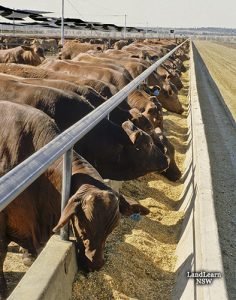See also:
- Nutritional Quality Home
- Antioxidants
- Nutrient Profiling Systems
- Organic vs. Conventional Foods
- Other Choices and Challenges
- Primer on Fatty Acids in Milk
- PLOS ONE Study on Fatty Acids in Conventional vs. Organic Milk
- Related Documents
Introduction


For decades doctors and dieticians have urged people to reduce fat intake to lower the risk of cardiovascular disease and a host of other health problems. Little attention was focused on fat quality. But in the last five years, the scientific consensus on fat has dramatically changed.
Government recommendations and policy brought transfats into the American diet 40 years ago, but now the FDA is forcing the food industry to quickly phase them out.
Once viewed as universally bad, saturated fat is enjoying a strong comeback as a result of science that shows that some important saturated fats are indeed heart-healthy.
Fatty Acids
While both major types of polyunsaturated fatty acids (PUFAs) – omega-6 and omega-3 – are essential nutrients, research has now shown that their health-promoting benefits depend on balanced intakes of each. But the current American diet contains about 15-times more omega-6 compared to omega-3, and some of the major omega-6s in food actually promote inflammation and heart disease.
Plus, high intakes of omega-6 relative to omega-3 reduce the body’s ability to convert the major omega-3 in food, alpha-linolenic acid (ALA), to the very important long-chain PUFAs DPA, EPA, and DHA (for more information, see this Primer on Fatty Acids Milk). These three long-chain PUFAs are present in food at low concentrations, but are vital for proper development of a child’s nervous system and eyes, to sustain brain health, and for strong immune systems.
Leading medical associations and the government have now acknowledged that the quality of fat in a person’s diet matters as much as the overall quantity of fat.
Unfortunately, over the last one-half century, there has been an explosion in consumption of deep-fried foods including French fries and fish and chips. And until recently, most foods have been deep-fried in corn or soybean oil, two oils that contain high levels of omega-6 fatty acids, compared to their level of omega-3s.
Impacts of Livestock Feeding Regimes

Another important factor impacting the good vs. bad fat debate is the way livestock are raised and fed. Both have changed dramatically, with major implications for omega 6 and omega-3 intakes. Across all areas of livestock agriculture, the importance of grass- and forage-based feeds has fallen precipitously, and corn, soybean, and other grain-based concentrates now account for most of the feed energy in animal rations.
This shift in what animals are fed has had profound impacts on human health, because corn and other grains are the building blocks of the primary omega-6 fatty acid, linoleic acid (LA), while pasture, grass, and legume-based forage feeds are the building blocks of ALA, the major omega-3 in food. Meat, milk and eggs from animals on grain-based rations have omega-6 to omega-3 ratios in the 5:1 to 12:1 range, while animals on grass- and legume-based diets produce food with ratios at or below 3:1.
Reducing dietary omega-6 to omega-3 intakes from around 15:1 (common today) to or below 2:1 will require a series of important changes in how animals are raised, the selection and use of cooking oils, and dietary choices. But significant progress is indeed possible, and is driving:
- Rising consumer demand for grass-fed beef and milk, and pasture-raised pork and poultry;
- The shift away from corn and soybean oil, and toward canola, olive, and other oils that lower the omega-6 to omega-3 ratio;
- Efforts by the biotechnology industry to create varieties of oilseed crops, especially canola, with altered fatty acid profiles that lower the omega-6:omega-3 ratio; and
- Innovation in the aquaculture industry to increase the supply and affordability of long-chain PUFAs from farm-raised fish.
Additional Resources
- Health Benefits of Conjugated Linoleic Acid (CLA)
- Organic Milk and Meat Enhances the Nutritional Quality of Human Breast Milk
